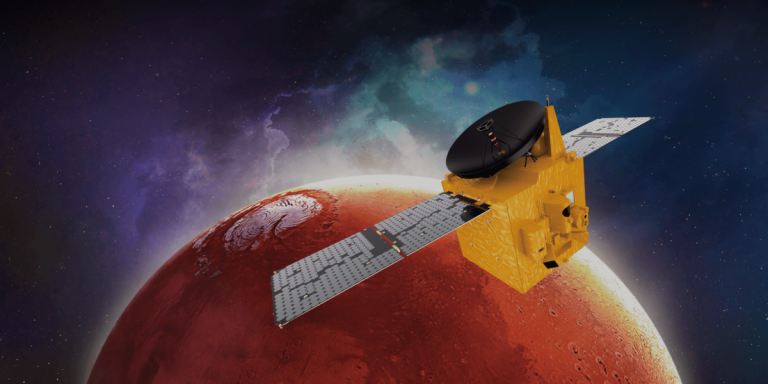
So on Tuesday, February 9, when the United Arab Emirates makes its first try to get a spacecraft into Martian orbit, it is going to be preventing the odds. If the Emirates Mars Mission succeeds, the UAE’s space program will turn into simply the fifth in the world to achieve the Purple Planet, after the Soviet Union, NASA, the ESA, and India.
“The workforce has ready in addition to they might presumably put together to achieve orbit round Mars,” says Sarah Al Amiri, chair of the UAE Space Company.
There’s some fairly thrilling science in retailer if all issues go nicely. However for the UAE and its companions, the Emirates Mars Mission is about rather more than capping off a journey that started final summer time. It’s about the way forward for a budding space program that desires to tackle extra bold initiatives down the street, and a nation that desires to turn into a new hub of tech and science innovation for Asia. Whether or not the Hope mission succeeds on Tuesday or not, its influence is already being felt.
The sciences
The Emirates Mars Mission is a part of a bigger investigation that planetary scientists have been pursuing for a long time now, hoping to find what remodeled Mars from a moist, heat, probably liveable world into a miserably dry and chilly one. An enormous piece of that puzzle is to determine how Mars hemorrhaged most of its ambiance in order that its lakes and rivers evaporated over time.
The mission plans to check the ambiance with an orbiter named Hope and its three key devices. A digital camera will snap photos of the planet utilizing a slew of filters that limit completely different wavelengths, serving to scientists be taught extra about the water and ice content material in the ambiance or the nature of mud storms nearer to the floor. An infrared spectrometer ought to be capable of measure completely different components in the decrease ambiance, like water vapor and carbon dioxide. And an ultraviolet spectrometer will monitor the high of the ambiance, monitoring the way it’s nonetheless disappearing into space.
Hope will orbit Mars at a increased altitude than any earlier Mars mission, permitting scientists to see half of the planet regardless of the place the orbiter is. Most different Mars orbiters transfer round the poles, so they’re compelled to look at places at the similar occasions of day with every go overhead. As an alternative, Hope will orbit practically parallel to the equator, so it is going to be in a position to watch places at many various factors all through the day and see how issues may change over time as the solar rises and units. And its elliptical orbit will afford other ways of the planet. At higher distances the spacecraft has a planet-wide view of Mars to look at world atmospheric modifications over a single day, whereas at nearer distances it could peer at particular areas to see how the ambiance in these places modifications minute by minute, hour by hour.
“The riskiest part”
Hope is set to rendezvous with Mars on Tuesday after a 27-minute thruster burn slows the spacecraft down by practically 3,600 kilometers per hour, permitting it to fall into the Martian orbit safely. That thruster burn is set to happen at round 7:32 p.m. UAE time (10:32 a.m. US Japanese time). The 11-minute lag in communication brought on by the distance between the two planets, nonetheless, implies that the burn is successfully an automatic course of—floor crews gained’t actually be capable of management what is taking place. They may primarily must hope for the finest as they obtain intermittent updates.